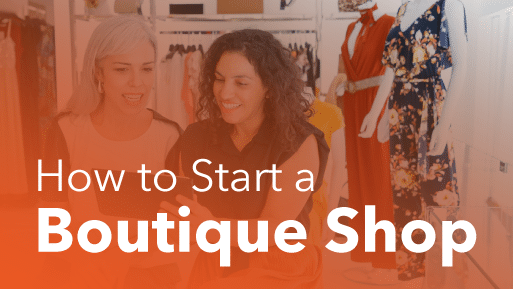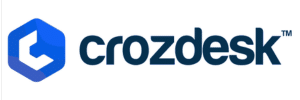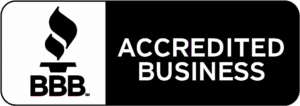Starting a boutique in 2025 can feel overwhelming, as rising competition, shifting trends, and tighter budgets make it challenging to stand out.
The answer to ‘How to Start a Boutique in 2025’ is clear: success requires meticulous planning, niche definition, and tech-driven operations. From finding your niche and sourcing inventory to choosing a location and managing daily operations, this guide covers every critical stage.
You’ll also discover how tools like KORONA POS can simplify sales, inventory, and customer management for long-term success.
Key Takeaways
- Define Your Niche: Focus on a specific market to attract loyal customers.
- Plan & Budget: Create a detailed business plan and manage startup costs carefully.
- Choose Location & Inventory Wisely: Select a visible, accessible location and stock products that match your niche.
- Build Relationships: Cultivate suppliers, designers, and customers for long-term growth.
Types of Boutiques You Can Start
The first step in starting a boutique is to know what type of boutique you want to establish. There are four types of boutiques based on how they stock merchandise: a consignment boutique, a traditional retail boutique, a franchise boutique, and a boutique that operates as a production house retail outlet.
Consignment Boutique
You sell items owned by designers or manufacturers and take a percentage of each sale. It requires little to no upfront inventory cost but yields lower profits. Ideal for beginners with limited capital.
Traditional Retail Boutique
You buy products wholesale and resell them at a markup. This model offers higher profit margins but requires substantial initial investment and a wholesale license. Building supplier relationships is key.
Franchise boutique
You operate under an established brand by paying a franchise fee. Start-up costs vary by brand, but you benefit from brand recognition and proven business systems. Some of the best clothing and accessory retail franchises include Plato’s Closet, Pro Image Sports, Uptown Cheapskate, Clothes Mentor, and Apricot Lane Boutique.
Production House Outlet
You manufacture and sell your own clothing. This model demands high investment in materials, labor, and production, but offers maximum profit potential if successful.
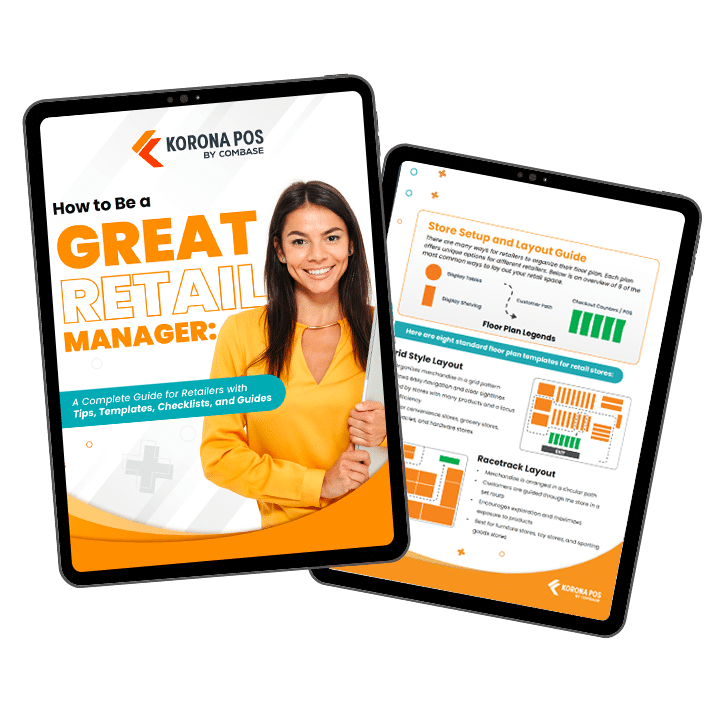
Free printable templates and checklists to help you manage retail operations with ease
How to Start a Boutique: A Step-by-Step Guide?
Here is a step-by-step guide on how to start a boutique:
Find Your Niche
Choosing a niche is crucial when starting a boutique because it defines your target market, product selection, and brand identity. Start by identifying what inspires you, fashion, accessories, or a specific lifestyle, and who you want to serve.
For example, within fashion, you might focus on women’s wear, men’s clothing, luxury fashion, vintage finds, kids’ apparel, plus-size collections, or bridal wear. Research market demand, competition, and your potential customers’ preferences before deciding.
A clear niche helps you create focused marketing, build brand loyalty, and stand out in a crowded market. Long-term success comes from serving a specific audience exceptionally well rather than trying to appeal to everyone.
PRO TIP
A well-defined niche, such as “Eco-friendly, work-from-home apparel for millennial women,” gives a clear competitive edge and makes marketing dollars much more effective.
Write Your Boutique Business Plan
A well-structured business plan is essential for launching a successful boutique. It serves as a roadmap that outlines your goals, target audience, product line, pricing strategy, and financial expectations.
Writing a business plan helps clarify your vision, attract investors, and guide decision-making as your boutique grows.
A solid boutique business plan should include:
- Executive Summary: A concise overview of your entire business, its mission, and keys to success.
- Company Description: Detail your boutique’s legal structure, location (physical or online), and niche focus.
- Products and Services: Describe the specific items you will sell, pricing strategy, and sourcing methods (wholesale, consignment inventory, etc.).
- Market Analysis: Present your customer profile, competitor analysis, and how your boutique will differentiate itself.
- Marketing and Sales Strategy: Outline how you will attract and retain customers (e.g., social media, SEO, local events).
- Management Team: Detail the key people involved and their relevant experience.
- Financial Plan: The most critical section. Include startup costs, funding requests, projected profit and loss statements, cash flow, and a break-even analysis.
Legal Steps to Start Your Boutique
Opening any business is bound by legal rules that your clothing store cannot escape. One of these rules is determining the business structure of your company.
Whether it’s a limited liability company (LLC), a corporation, a partnership, or a sole proprietorship, it will impact your day-to-day operations, your taxes, and the level of risk you are willing to take with your assets.
PRO TIP
It is advisable to select a structure that strikes a balance between legal protections and benefits. Once you know what business structure to give your company, take the following steps:
Choose a name for your store
How to start a boutique begins with choosing a name for your business. The name should reflect your brand and the products you intend to sell. When choosing a name, try to make it short, easy to remember, descriptive of the business, and capable of attracting attention.
Register and trademark your business
Depending on your location and business structure, you may need to register your business with the state and/or local authorities. To do this, LLCs and corporations must register (online or by mail) with the Secretary of State or the business agency where they operate.
MUST-KNOW
Suppose you choose to operate your business under a name other than your personal name, even if you are a sole proprietor. In that case, you will need to register that business name with the state and/or local government in a process known as “doing business as” (DBA). You must also trademark your business name to avoid any legal entanglements down the road.
Obtain Federal and State Tax IDs
You cannot open a retail store without registering your business with the IRS and obtaining an Employee Identification Number (EIN). This will be required for federal and state tax returns. You do not need an EIN if you are a sole proprietor with no employees. Instead, you will file your taxes using your own Social Security number.
An EIN is also required to open a business bank account and keep your business and personal finances separate. You may also need a state tax identification number.
Generally, you must obtain an EIN before applying for your tax ID number. Check with your state or a business attorney, as the procedure varies by state.
Obtain Licenses and Permits
Generally, your clothing boutique store may need to obtain the following licenses and permits:
- Basic business operation license
- Sales tax license/sellers permit/resellers permit
- Building permit
- Certificate of Occupancy
- Alarm permits
- Garment/apparel registration certificate
- Wholesale license
Open a business bank account
A business bank account and credit card separate your personal and business transactions. If you start a store as an LLC or corporation, opening a business bank account helps protect your personal liability and assets in case your business is sued or found liable.
A bank account and credit card also help you establish business credit, which suppliers and vendors will verify before doing business with you.
Choose Your Business Structure
Choosing the right structure depends on your resources, risk tolerance, and growth goals. Many boutique owners start as an LLC for simplicity and protection while maintaining flexibility for expansion.
Sole Proprietorship: Easiest to start and gives full control but offers no personal liability protection.
Partnership: Shared ownership and skills, but partners share debts and legal responsibilities.
Limited Liability Company (LLC): Protects personal assets while offering flexible management and tax options; requires formal registration.
Corporation: Offers strong liability protection and better funding opportunities but involves complex setup, regulations, and double taxation for some types.
Structure | Pros (Advantages) | Cons (Disadvantages) |
Sole Proprietorship | Simplest; easy setup; 'pass-through' taxes. | Owner is fully liable for business debts. |
Partnership | Shared workload/capital; 'pass-through' taxes. | All partners are personally liable; potential partner conflicts. |
LLC (Limited Liability Company) | Protects personal assets from business debts. | More complex setup; state fees; different tax rules. |
Corporation (S or C) | Best for raising capital; separates ownership completely. | Most complex; double taxation (C-Corp); extensive regulation. |
Ways to Get Funding to Start Your Boutique
Here are straightforward ways to fund your boutique:
Self-Funding/Bootstrapping: Use personal savings, freelance income, or sell existing assets to fund your business. This method gives you complete control and avoids debt, but limits your initial capital.
Friends and Family Loans/Investments (Love Money): Borrowing from personal networks is often flexible with lower interest rates or a small equity share. Always formalize the agreement with clear, written terms to protect relationships.
Small Business Loans (Bank/SBA): Traditional loans require a strong credit score and a detailed business plan. They offer a large sum with fixed terms but can involve a long application process and collateral.
Business Line of Credit: Provides access to funds up to a certain limit, which you draw from only when needed. It is excellent for short-term cash flow and covering unexpected inventory or seasonal expenses.
Crowdfunding (e.g., Kickstarter): Raise capital from many individuals, often in exchange for a reward (like a pre-order). It also validates your product idea and helps build an early customer community before launch.
Angel Investors/Venture Capital (VC): Investors provide large sums of capital in exchange for equity (ownership) in your boutique. They typically seek high-growth businesses and often take an active role in strategy.
PRO TIP
The ideal capital you need to start your store will depend on the location of your store, the type of clothing you want to offer, the size of the store, hiring employees, decorating the store, other costs, etc.
Choosing the Best Location for Your Shop
Consider the following factors when selecting a physical location:
- Target Market Proximity: Set up shop where your ideal customers already spend time. A high-end luxury boutique should be situated near other upscale retailers, rather than a discount mall.
- Foot Traffic and Accessibility: Prioritize locations with high, consistent foot traffic, such as busy downtown streets, popular shopping centers, or tourist districts. Consider parking availability and proximity to public transportation for easy customer access.
- Competitor Analysis (Co-tenancy): Evaluate the nearby competition. Having complementary businesses (like a popular coffee shop or complementary stores) can be beneficial. Avoid oversaturation by identical boutiques.
- Visibility and Storefront Appeal: The shop must be easily visible from the street, and the storefront should be attractive and inviting.
- Lease Terms and Costs: Thoroughly review the lease agreement to understand the monthly rent, duration, and escalation clauses. Ensure the total occupancy cost (rent plus utilities and maintenance) fits comfortably within your financial plan.
- Zoning and Local Regulations: Verify that the location is properly zoned for retail use. Check local ordinances regarding signage, operating hours, and any necessary permits required by the municipality before signing a lease.
- Safety and Environment: Choose a location that is safe for both customers and staff, especially during evening hours. The general cleanliness and upkeep of the surrounding area contribute significantly to your boutique’s image.
Where to Buy Clothes to Start a Boutique
A successful boutique requires a reliable, curated inventory. The key is finding vendors whose quality, style, and pricing align with your brand.
Identify Your Sourcing Channel
Choose your primary purchasing method: Wholesale Distributors offer bulk, ready-to-ship items. Direct Manufacturers (for private label) offer custom designs but require high Minimum Order Quantities (MOQs). Consignment requires no upfront cost for inventory.
Utilize Online Wholesale Marketplaces
Register on B2B platforms like Faire, FashionGo, or Alibaba (vet carefully). Browse catalogs and compare pricing and MOQs quickly. These sites offer convenience and often feature a vast selection of emerging brands.
Attend Trade Shows and Markets
Visit major fashion trade shows (e.g., MAGIC) or local fashion districts (e.g., LA, Dallas). Meeting vendors in person builds relationships, verifies product quality firsthand, and offers better negotiation opportunities on terms.
Vet Suppliers and Check Reviews
Before committing to a large order, request product samples to test quality, fit, and fabric. Look for reviews from other boutique owners regarding the supplier’s reliability, shipping speed, and customer service.
Negotiate Terms and Place Test Orders
Discuss payment terms, reorder flexibility, and shipping costs. Start with a small test order to assess the entire process, from payment to delivery, before placing your main inventory purchase.
Designing Your Boutique Store Layout
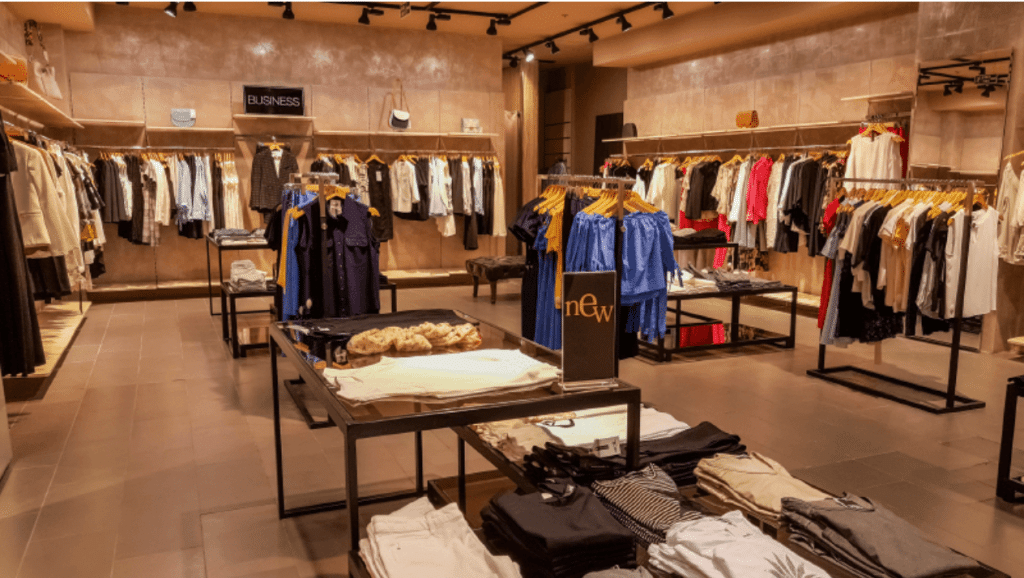
Designing your boutique’s layout is crucial for guiding customer flow and maximizing sales. It must be both beautiful and highly functional.
1. Define the Customer Flow Path
- The Decompression Zone: This is the entrance area where customers adjust. Keep it clear of merchandise, focusing instead on inviting signage or a brand visual.
- The Power Wall: Place your most exciting, high-margin, or new merchandise on the wall immediately to the right of the entrance. Customers naturally look and turn right.
- The Racetrack/Loop: Design a natural, easy-to-navigate loop that encourages customers to see all sections before reaching the cash wrap. Avoid dead ends.
2. Strategize Fixtures and Displays
- Grid vs. Free-Flow: Determine if a straight (grid) layout for maximizing product density or a more relaxed (free-flow) arrangement for a premium experience better suits your brand.
- Grouping Products: Group complementary items together (e.g., shirts with matching accessories or jackets). This maximizes the chance of multiple item purchases per visit.
- Adjustable Fixtures: Use shelving and racks that can be easily moved or height-adjusted. Flexibility is key for showcasing seasonal collections and adapting to new inventory.
3. Optimize High-Value Zones
- The Cash Wrap/Point of Sale (POS): Position the counter in a visible, easily accessible area, often near the back or center. Keep the space organized and use it for impulse buys like small accessories or gift cards.
- Fitting Rooms: Locate fitting rooms in a private, well-lit, and easily accessible corner. They are critical to sales; ensure there is comfortable seating and hooks for multiple garments.
- Window Displays: Dedicate time and budget to your windows. They are your most important marketing tool for attracting street traffic and should immediately communicate your boutique’s style and current theme.
4. Manage Lighting and Ambiance

- Task and Accent Lighting: Use bright, focused lighting on displays and fitting rooms to highlight products and ensure customers look their best. Use softer ambient lighting elsewhere to create a welcoming mood.
- Flooring and Color Scheme: Select durable flooring that is suitable for high-traffic areas. Select a color scheme that reinforces your brand identity but does not overpower the clothing itself.
How to Manage Your Boutique Store Day-to-Day?
A successful boutique relies on predictable, consistent daily execution. Here is an actionable day-to-day management plan, broken into three phases:
☀️ Morning Routine (Pre-Opening)
- Security and Setup Check: Disarm the alarm, inspect the perimeter for security issues, and activate all interior and window lights. Adjust the thermostat to create a comfortable and inviting shopping environment.
- Cleaning and Visual Merchandising: Wipe down counters, sweep/vacuum the floor, and clean fitting rooms immediately. “Front-face” all merchandise, straighten racks by size, and refresh window and key interior displays.
- POS and Cash Prep: Boot up the point of sale system. Count the cash float (petty cash) in each drawer, reconcile it with the system, and confirm that the receipt printer is stocked and functioning properly.
PRO TIP
Daily Team Briefing (If Applicable): Review sales targets from the previous day, communicate the day’s promotions or new arrivals, and assign specific task priorities to team members.
🏃 During Operating Hours (Mid-Day)
- Customer Engagement Focus: Prioritize active selling and personalized service. Ensure staff approach every customer quickly.
- Continuous Merchandising: Conduct “recovery” throughout the day, straightening messy displays, refolding items, and rehanging clothes left in fitting rooms. A tidy store increases sales.
PRO TIP
Inventory Receiving/Processing: If a shipment arrives, process it immediately in the stockroom. Check-in items against the packing list, tag merchandise, and update your inventory management system and (POS).
Inventory management a headache?
KORONA POS makes stock control easy. Automate tasks, generate custom reports, and learn how you can start improving your business.
- Social Media Engagement:Dedicate a short block of time to post new product photos or stories, respond to customer comments, and monitor online orders for quick fulfillment.
🌙 Evening Routine (Closing)
- Final Store Recovery:Perform a complete store recovery, ensuring the shop floor looks ready for opening the next morning. Clean all fitting rooms and empty trash bins.
- Cash Reconciliation and Reporting: Count the cash in the register, run the End-of-Day (EOD) report on the POS system, and prepare the bank deposit slip. Analyze the sales report to note trends and inventory needs.
Speak with a product specialist and learn how KORONA POS can power your business.
- Prepare for Tomorrow: Lock up any high-value merchandise. Write down the inventory to be restocked or the key tasks for the morning team. Power down non-essential equipment and arm the security system.
Set Up a POS System for Sales and Inventory
A POS point of sale system is crucial for efficiently managing both sales and inventory. It tracks transactions in real time, records payment methods, and provides detailed sales reports.
Accurate sales data helps you understand customer preferences, identify top-selling products, and make informed pricing decisions.
For inventory management, a POS system automatically updates stock levels with every sale. It alerts you when items are low, reducing the risk of overstocking or stockouts. Many systems also integrate with suppliers.
Setting up a POS system involves selecting software that fits your boutique size and product range, configuring product categories, and training staff.
Ensure the system supports sales reporting, inventory tracking, and customer data management. A reliable POS system saves time, improves accuracy, and promotes informed business decisions, ultimately contributing to increased profitability and growth.
Hiring the Right Employees
You can start your boutique and decide not to employ staff initially to reduce operational costs. Many business owners start on their own, doing everything themselves until they begin to make a profit.
However, you will need to hire someone at some point, at least temporarily. You need staff to clean the space, manage the cash flow, and support the salespeople. When hiring employees, ensure they follow your store’s operational policies.
Don’t compromise on this; if the owner is lax on rules, expect employees to follow them. And with employees who don’t follow your store’s management policies, you may go out of business sooner than expected.
Simple Marketing Ideas and Strategy to Grow Your Boutique
Here are some strategies you can implement:
Establish a Strong Visual Social Presence
Focus on Instagram and TikTok with high-quality, visually appealing photos and videos. Consistently post new arrivals, styling tips, and “Behind-the-Scenes” content to humanize your brand and increase engagement.
Implement Shoppable Content
Make the path to purchase immediate by using shoppable tags on Instagram and Facebook posts. This turns discovery into a direct sale opportunity, making it easy for followers to buy what they see.
Grow and Utilize an Email List
Incentivize sign-ups with an exclusive discount (e.g., 10% off first purchase). Use email to announce flash sales, give loyal customers early access to new collections, and share exclusive styling guides.
Host Local Events and Partnerships
Partner with nearby complementary businesses (e.g., a salon or coffee shop) for cross-promotion or joint events (“Sip & Shop” nights).
Encourage User-Generated Content (UGC)
Create a branded hashtag and ask customers to share photos of themselves wearing your clothes. Regramming customer photos builds trust, provides social proof, and supplies you with continuous, authentic content.
Simplify Your Boutique Operations with KORONA POS
KORONA POS is a robust, processing-agnostic system perfect for streamlining boutique operations. It offers dual-pricing functionality. Its retail inventory management system tracks stock by color, automates reordering, and identifies best-selling products, saving time and reducing losses.
For boutiques with multiple branches or franchises, KORONA offers tools to make pricing, transfers, and performance tracking simple and efficient. It provides detailed reporting and analytics.
Built-in loyalty programs enhance customer retention by offering personalized rewards and targeted promotions. Sign up for a demo with KORONA POS today and discover how it can simplify your boutique operations.
Speak with a product specialist and learn how KORONA POS can power your business.
FAQs
1. How do I price my clothing?
Use a keystone markup (2x the cost) as a minimum, but aim for a 2.5x to 3x markup to cover overhead, discounts, and profit. Research competitor pricing.
2. Do I need an LLC to start a boutique?
No, you can start as a Sole Proprietorship. However, an LLC or corporation offers personal liability protection and may be required as your business grows.
3. How much does it cost to open a clothing boutique store?
Costs vary widely: a small online boutique may cost $1,000 – $5,000. A physical storefront can be $50,000 – $200,000+, depending on location, build-out, and inventory.
4. How profitable is a clothing boutique business?
Profitability is highly variable. Successful boutiques often see a net profit margin of 4% to 15%. High sales volume, low overhead, and efficient inventory management are key.
5. How many items should you start a boutique with?
For a good initial selection, aim for 30 to 50 unique products with 3 to 5 units per size/style. Focus on quality and a cohesive aesthetic.
6. How long does it take a boutique to make money?
An online boutique might become profitable within 3 to 6 months. A physical store usually takes 1 to 3 years to become consistently profitable due to higher initial setup and overhead costs.


